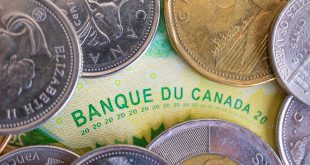Further to earlier reports, the International Monetary Fund has reportedly stated that “should Japanese long-term rates rise further, Japanese investors’ repatriation of funds could affect sovereign bond yields in Australia, several euro area countries, and in the US.” This is in reference to earlier reports that the IMF on Tuesday released its weakest global growth expectations for the medium term in more than 30 years.
In Asia, the IMF is stating that allowing for more YCC flexibility may have some effects on global markets, but it may also help avoid future abrupt policy changes that may result in significant spillovers.
Neel Kashkari, president and chief executive officer of the Federal Reserve Bank of Minneapolis, recently remarked, “2% inflation target should not be adjusted,” which not only teases US Dollar supporters but also encouraging inflation signals.
But it’s important to keep in mind that other Fed governors have recently expressed a range of worries, and the CME’s FedWatch Tool also indicates that the hawkish leaning for the US central bank’s 0.25% rate hike in May is diminishing. These factors have recently put pressure on the US Dollar.
Patrick Harker, president of the Philadelphia Federal Reserve, stated on Tuesday that the Federal Reserve will continue to carefully review the evidence at hand to determine what, if any, additional actions may need to be taken. Harker asserts that it may take up to 18 months for the full effects of monetary policy decisions to be felt, but he is already observing encouraging signs of progress. However, he stated that it is “disappointing” that recent data indicate disinflation is progressing slowly and that the Fed is completely committed to a 2% inflation rate. He said the US banking system is strong and dependable.
One day before the release of the March US Consumer Price Index, the US Dollar Index fell after climbing for four days (CPI). The most recent FOMC minutes will be released on Wednesday as well. The economic data and the minutes could have a significant impact on markets and expectations for monetary policy.
On Tuesday, EUR/USD recovered and reclaimed 1.0900; the upward movement was stopped by 1.0930. A weakened US dollar and anticipation of another rate hike from the European Central Bank boost the pair’s optimistic outlook (ECB). Most of the Euro’s significant competitors underperformed.
Economic Data
10-year and 5-year breakeven inflation rates from the St. Louis Federal Reserve (FRED) jumped to the highest levels since April 03 while renewing the weekly tops with 2.29% and 2.36% figures by the end of Tuesday’s North American session.
Key Developments
Japan will issue its Producer Price Index during the Asian session, and RBA’s Bullock will take part in a panel discussion. US consumer inflation statistics will be the main event on Wednesday. The Federal Reserve will release the most recent FOMC meeting’s minutes later. The Bank of Canada will meet to discuss monetary policy. The Dollar looks weak ahead of busy hours.
US yields rose on Tuesday but did not help the Greenback. The US 10-year yield reached levels above 3.45% and the 2-year peaked at 4.08%. Stocks in Europe finished higher after Easter Monday and Wall Street posted mixed results. The International Monetary Fund downwardly revised its global growth forecast for 2023 to 2.8%.
USD/JPY erased losses during the American session rising back to the 133.70 zone. Bank of Japan’s Ueda signaled they are not in any hurry to change the current stance of monetary policy. Japan’s Producer Price Index is due on Wednesday.
GBP/USD rose on Tuesday after four days of losses, ending above 1.2400. Market participants continue to see a new rate hike from the Bank of England in May.
NZD/USD extended the slide from last week’s spike and broke below 0.6200, to the lowest level in two weeks. The Kiwi was the worst G10 performer. New Zealand Credit Card spending data is due on Wednesday. EUR/NZD rose above 1.7600, to the highest level since November 2020.
AUD/USD peaked at 0.6680 and then pulled back to 0.6650. The short-term bias point to the downside ahead of the Australian Employment report due on Thursday.
On Tuesday, USD/CAD resumed its downward trend and fell towards 1.3450. The Bank of Canada will make its monetary policy announcement on Wednesday. Rates aren’t anticipated to change. The projections and the presser will be the main topics.
Despite increasing yields, gold climbed above $2,000 and silver above $25. For the first time since June of last year, Bitcoin surpassed $30,000.
Also Read:
ECB’s Villeroy warns Eurozone inflation at risk of getting entrenched
Wall Street floats through a quiet US session ahead of CPI data
WTI bulls move back in to test the recent output cuts
US CPI Preview: Inflation softening, is there good news on the horizon?
Fed’s Goolsbee: We need to asses potential impact of financial stress on US economy
 Noor Trends News, Technical Analysis, Educational Tools and Recommendations
Noor Trends News, Technical Analysis, Educational Tools and Recommendations





